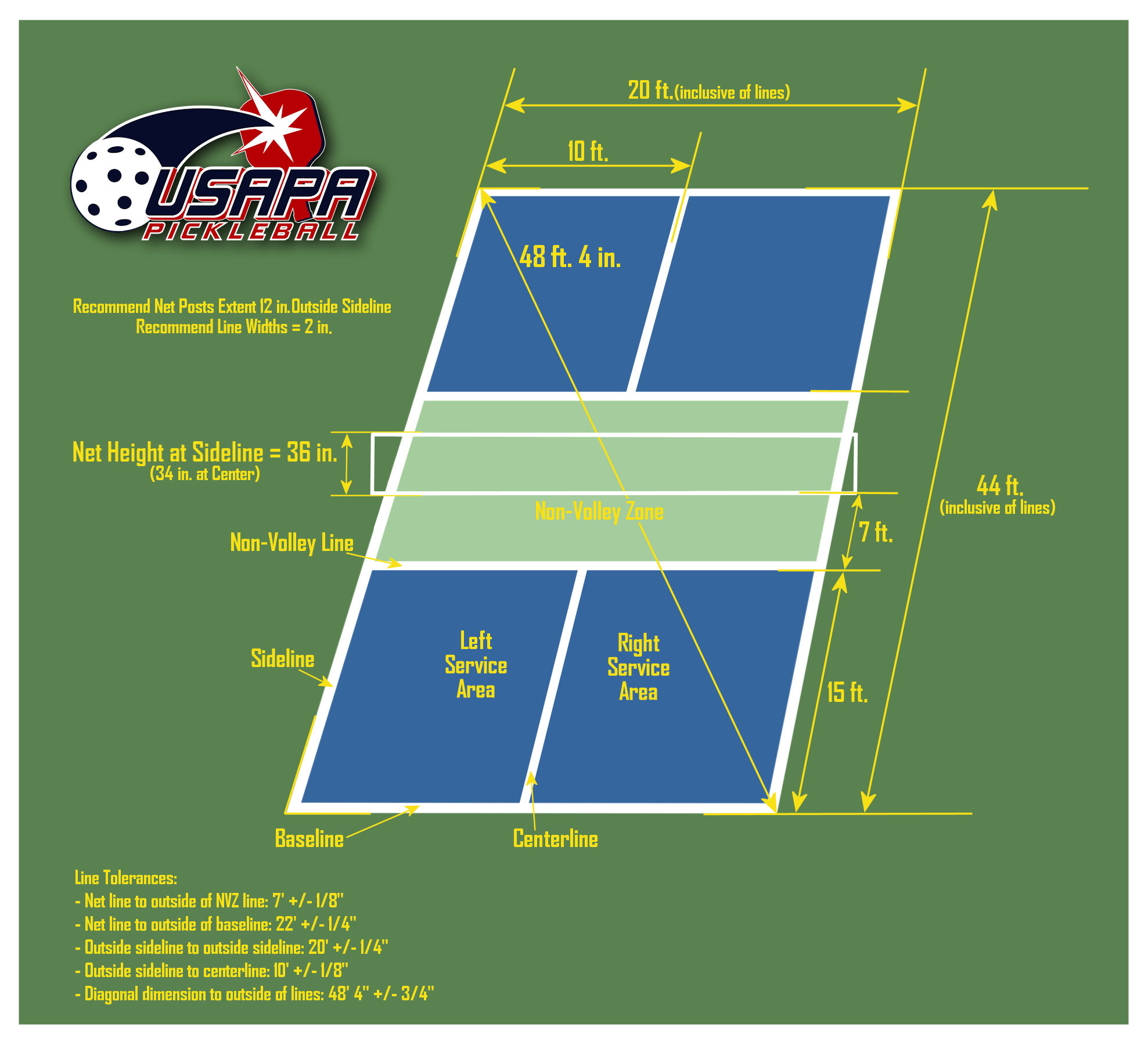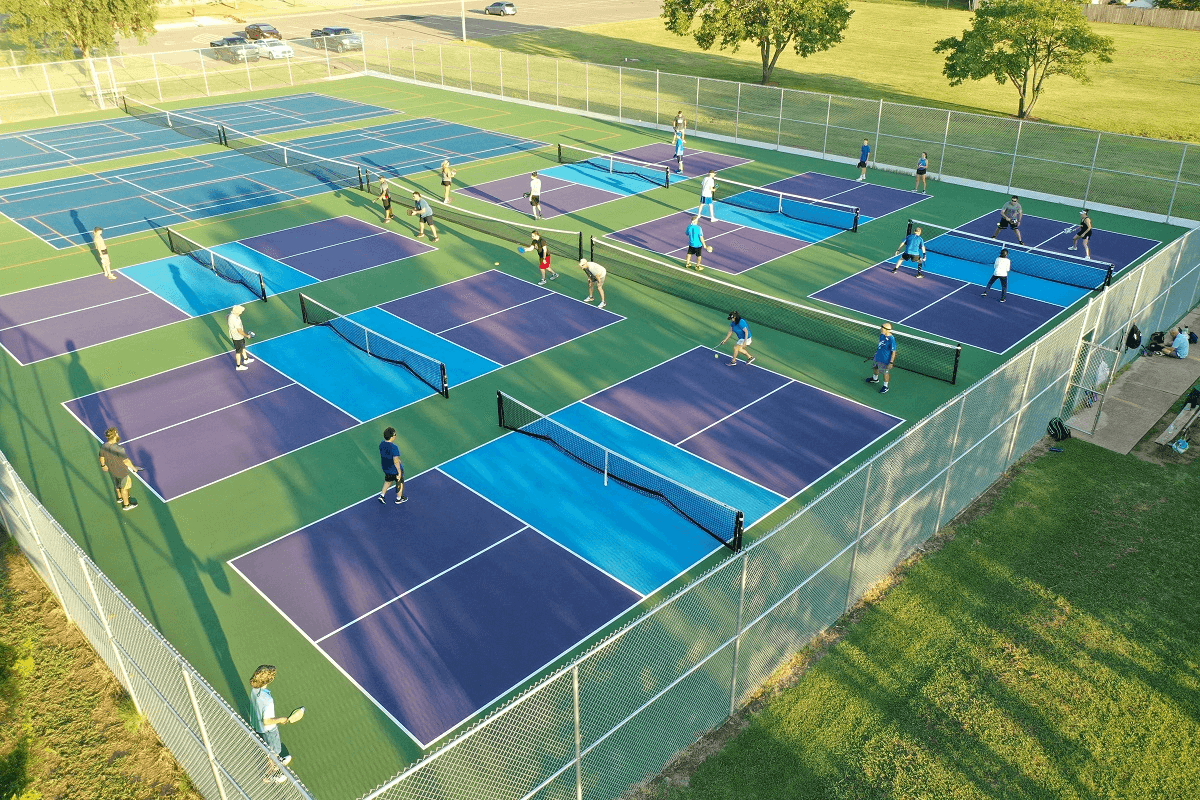Change Your Space with Top Quality Pickleball Courts Style & Construction in Illinois and Midwest
Change Your Space with Top Quality Pickleball Courts Style & Construction in Illinois and Midwest
Blog Article
Trick Consider the Construction of Pickleball Courts: From Site Selection to Final Surfaces
The building and construction of pickleball courts incorporates a range of important elements, starting with the option of a suitable site that balances accessibility with ecological considerations. Important components such as court measurements, surface area products, and water drainage systems substantially influence not only the high quality of play however additionally the long life of the facility. Focus to lights and finishing touches can raise the general experience for players and viewers alike. Comprehending just how each of these parts interrelates may reveal understandings that are usually neglected, motivating a more detailed assessment of ideal techniques in court building and construction.
Site Choice Criteria
When beginning on the building of pickleball courts, it is necessary to nail down the site selection standards that will guarantee ideal playability and accessibility. The place needs to be easily obtainable for players, ideally located near property areas or recreation center, to urge participation.
Furthermore, the surface should be level and stable, as unequal ground can result in safety and security hazards and influence gameplay. Adequate drain is also essential; choosing a site with great water overflow will certainly help maintain court conditions during unfavorable weather condition.
An additional crucial factor to consider is the schedule of energies. Accessibility to electrical energy and water is needed for lights and maintenance functions. Furthermore, proximity to vehicle parking centers is crucial, helping with easy gain access to for players and viewers alike.
Environmental elements can not be forgotten; all-natural shade from trees can improve gamer convenience, while direct exposure to prevailing winds might interfere with play. Zoning guidelines and area support must be considered to ensure that the job lines up with local guidelines and receives the backing it needs for successful application. By very carefully reviewing these requirements, stakeholders can produce an inviting and useful atmosphere for pickleball enthusiasts.
Court Dimensions and Format
To make sure ideal gameplay and adherence to guidelines, the dimensions and layout of pickleball courts should be very carefully specified. A standard pickleball court gauges 20 feet in width and 44 feet in length for both songs and doubles play. The suggested format consists of a non-volley zone, commonly referred to as the "kitchen," extending 7 feet from the internet on either side. This area is vital, as it affects player positioning and shot selection - Illinois and midwest.
The web elevation is established at 36 inches at the sidelines and 34 inches at the facility, creating a minor dip that influences round trajectory. Court markings are just as crucial; lines need to be 2 inches broad and distinctive in shade to make certain presence.
Additionally, a buffer area bordering the court is a good idea, generally prolonging 5 to 10 feet past the sidelines and baselines to fit gamers' movements and boost safety. Correct format and dimensions not only ensure conformity with official regulations however likewise boost the total playing experience, fitting both recreational and affordable play. Cautious planning in these locations is vital to the successful building of pickleball courts.
Surface Product Options
Selecting the right surface material for pickleball courts is critical for making certain optimal player performance and safety. The option of surface can significantly impact gameplay, including sphere bounce, grip, and gamer convenience.
There are several alternatives available, each with its distinctive qualities. Asphalt is a preferred selection as a result of its resilience and low upkeep demands. It offers a strong having fun surface that can stand up to different climate condition but may require periodic resurfacing.
Concrete is one more extensively utilized material, using outstanding durability and a smooth finish. It permits for regular round bounce however can be tough on players' joints, making it less desirable for long-lasting play without correct padding.
For those looking for improved comfort and shock absorption, supported acrylic surface areas provide a practical choice. These surface areas integrate a base layer with an acrylic overcoat, offering boosted traction and a softer feel, which is helpful for decreasing the risk of injuries.
Last but not least, artificial grass is getting grip, specifically for multi-purpose facilities. click here for more Its versatility and lower maintenance requires make it an attractive choice, though it may not give the very same ball reaction as traditional difficult courts. Mindful consideration of these choices will certainly ensure an optimal playing atmosphere.
Drain and Illumination Considerations
Proper drainage and effective lighting are vital parts in the construction of pickleball courts, considerably affecting both playability and security. Ample drainage systems avoid water buildup, which can bring about unsafe surface areas and damage to the court framework. A properly designed drainage strategy incorporates sloped surfaces and proper materials to help with water move away from the playing location - Illinois and midwest. This not just protects the integrity of the court but likewise lessens downtime because of bad weather.
Lighting is just as important link vital, especially for courts planned for night use. Proper lighting boosts exposure, guaranteeing that gamers can see the sphere plainly and reducing the risk of mishaps. The positioning of illumination components must be purposefully prepared to eliminate shadows and offer even distribution of light across the court. LED lights are recommended for their power performance and longevity, offering bright lighting while minimizing operational expenses.

Last Surfaces and Maintenance
After resolving drainage and illumination considerations, attention transforms to the final coatings and continuous upkeep of pickleball courts. Common options consist of acrylic layers and specialized sporting activities surfaces that offer optimum grip and cushioning.

Seasonal maintenance might consist of resurfacing every few years, depending on usage and environmental elements. Correctly keeping webs, court lines, and surrounding locations is similarly crucial to provide a safe and enjoyable playing experience. By buying quality coatings and adhering to an organized maintenance schedule, facility owners can guarantee their pickleball courts remain in exceptional condition for several years to find.
Verdict
In final thought, the effective building and construction of pickleball courts rests on careful focus to a number of vital variables. Website selection must focus on availability and terrain stability, while court dimensions and format must stick to optimum standards for gameplay. The choice of surface area product dramatically influences player security and efficiency. Moreover, resource effective water drainage and ample lights add to court long life and presence. Quality coatings and a robust maintenance timetable are vital for maintaining the court's condition, boosting the overall experience for players and spectators alike.
Report this page